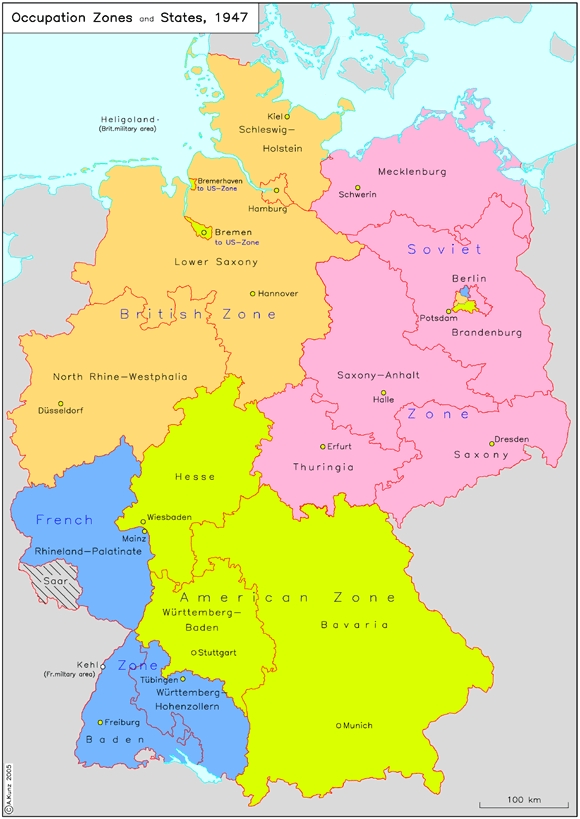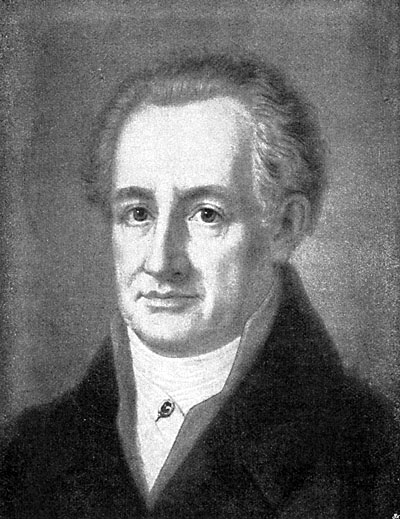Anna Amalia Bibliothek
Anna Amalia (1739-1807) was the niece of Friedrich the Great from Weimar. She is most noted for bringing together some of the most eminent men in Germany in Weimer. Of them include: Herder (German philosopher, theologian, poet, and literary critic), Goethe (German writer, artist, and politician) and Schiller (German poet, philosopher, historian, and playwright). She was also known for her compositions, one of the most famous being Singspiel 'Erwin und Elmire'.The library was originally built as the Grünes Schloss and was later converted into a library in 1761. Today, the library is said to contain literary documents from the 9th to the 21st centuries containing pieces of German cultural history. The library is currently available to the public and said to contain 1 million books, 2,600 book manuscripts, 8,600 maps and 29 globes. Some of the books that can be found in the library include first editions of Baroque and Enlightenment classics, some of Anna Amalia's collection of 700 musical manuscripts and hundreds of other great, rare volumes, however, the collection is by no means homogeneous or limited to a specific topic.
On September 2, 2004, the library went up in flames which lasted approximately 67 hours. The fire was said to start as a result of the building's faulty wiring. A total of 112,000 books were either damaged or destroyed and replacing them will cost about $90.6 million and will take at least ten years to recover or replace them. Much of the Rococo Hall was destroyed in the fire and has since then been restored into a place for research as well as a gallery.
"Amalie.html." Amalie.html. N.p., n.d. Web. 23 Nov. 2012. <http://www.exulanten.com/amalie.html>.
"The Books Are Back: Weimar's Anna Amalia Library To Re-Open." SPIEGEL ONLINE. N.p., 4 Oct. 2007. Web. 23 Nov. 2012. <http://www.spiegel.de/international/germany/the-books-are-back-weimar-s-anna-amalia-library-to-re-open-a-509424.html>.
"Historic Building and Rococo Hall." Klassik Stiftung Weimar: Rococo Hall. N.p., n.d. Web. 23 Nov. 2012. <http://www.klassik-stiftung.de/index.php?id=313>.
"Paper Promises." The Economist. The Economist Newspaper, 18 Jan. 2007. Web. 23 Nov. 2012. <http://www.economist.com/node/8548545>.
Image URLs:
http://www.siegburg.de/mam/stadt/newsletter/2011/04/30.04.2011_annaamalia_100.jpeg
http://www.flickr.com/photos/alfredoliverani/3491403388/
http://www.steinzeit-hdr.de/search/for=/sort=title,desc
http://www.robert-schmidt-berufskolleg.de/wb/media/berufsschule/fi/Bibliotheken/Weimar_03.jpg
http://www.anna-amalia-bibliothek.de/en/rokokosaal.html
Gendarmenmarkt
"Many Berliners believe that the Gendarmenmarkt is the most beautiful place in Germany and indeed in all of Europe" says just one German tourist visit center website. The square is most known for its collection of French cathedral Friedrichstadtkirche, German cathedral and Concert House. During this time of the year, the market place is largely known for its many booths and performances paying homage to the holidays. Here, you can spot dancers, musicians, jugglers and other street performers entertaining tons families. Unlike many market places during the Christmas season, the Gendarmenmarkt charges a one-Euro admission fee.
 The square consists of three notable buildings, the first being the French cathedral Friedrichstadtkirche. Based on the designs of Jean Louis Cayart, the cathedral was built between 1701 and 1705. The church was originally constructed for French Protestants who had fled to Berlin. Unfortunately, the building was destroyed during World War II and required large amounts of restoration in order to reopen again on October 2, 1996.
The square consists of three notable buildings, the first being the French cathedral Friedrichstadtkirche. Based on the designs of Jean Louis Cayart, the cathedral was built between 1701 and 1705. The church was originally constructed for French Protestants who had fled to Berlin. Unfortunately, the building was destroyed during World War II and required large amounts of restoration in order to reopen again on October 2, 1996.The German cathedral, located just across the French Friedrichstadtkirche, was built by Giovanni Si-monetti between 1701 and 1708. Originally built without the iconic dome, between 1780 and 1785 Carl von Gontard added the domed tower. Just like the French cathedral, this beautiful piece of architecture was destroyed during World War II and was later restored.
The last building that makes up the beautiful Gendarmenmarkt is Karl Friedrich Schinkel's Konzerthaus . It was built between 1800 and 1802 by Karl Gotthard Langhans and was meant to replace the National Theatre, which had burned down in 1817. This building was also destroyed during World War II and was later restored.
Sources:
"Gendarmenmarkt." Berlin. N.p., n.d. Web. 23 Nov. 2012. <http://www.visitberlin.de/en/spot/gendarmenmarkt>.
"Gendarmenmarkt." Berlin. N.p., n.d. Web. 23 Nov. 2012. <http://www.berlin.de/orte/sehenswuerdigkeiten/gendarmenmarkt/index.en.php>.
"WeihnachtsZauber Gendarmenmarkt | Der Hauptstadt Weihnachtsmarkt." WeihnachtsZauber Gendarmenmarkt. N.p., n.d. Web. 23 Nov. 2012. <http://www.gendarmenmarktberlin.de/wp/?lang=en>.
Image URLs:
http://upload.wikimedia.org/wikipedia/commons/f/f7/Gendarmenmarkt_berlin_2008_c_filtered.jpg
http://upload.wikimedia.org/wikipedia/commons/c/cf/Berlin_-_Gendarmenmarkt_-_around_1900.jpg
http://upload.wikimedia.org/wikipedia/commons/thumb/5/57/Berlin_Franzoesicher_Dom_BW_5.jpg/330px-Berlin_Franzoesicher_Dom_BW_5.jpg
http://upload.wikimedia.org/wikipedia/commons/thumb/5/5a/Berlin,_Mitte,_Gendarmenmarkt,_Konzerthaus_01.jpg/330px-Berlin,_Mitte,_Gendarmenmarkt,_Konzerthaus_01.jpg
http://www.dinaview.com/wp-content/uploads/2009/12/wm_gendarmenmarkt__horststiller_0211.jpg
Sources:
"Gendarmenmarkt." Berlin. N.p., n.d. Web. 23 Nov. 2012. <http://www.visitberlin.de/en/spot/gendarmenmarkt>.
"Gendarmenmarkt." Berlin. N.p., n.d. Web. 23 Nov. 2012. <http://www.berlin.de/orte/sehenswuerdigkeiten/gendarmenmarkt/index.en.php>.
"WeihnachtsZauber Gendarmenmarkt | Der Hauptstadt Weihnachtsmarkt." WeihnachtsZauber Gendarmenmarkt. N.p., n.d. Web. 23 Nov. 2012. <http://www.gendarmenmarktberlin.de/wp/?lang=en>.
Image URLs:
http://upload.wikimedia.org/wikipedia/commons/f/f7/Gendarmenmarkt_berlin_2008_c_filtered.jpg
http://upload.wikimedia.org/wikipedia/commons/c/cf/Berlin_-_Gendarmenmarkt_-_around_1900.jpg
http://upload.wikimedia.org/wikipedia/commons/thumb/5/57/Berlin_Franzoesicher_Dom_BW_5.jpg/330px-Berlin_Franzoesicher_Dom_BW_5.jpg
http://upload.wikimedia.org/wikipedia/commons/thumb/5/5a/Berlin,_Mitte,_Gendarmenmarkt,_Konzerthaus_01.jpg/330px-Berlin,_Mitte,_Gendarmenmarkt,_Konzerthaus_01.jpg
http://www.dinaview.com/wp-content/uploads/2009/12/wm_gendarmenmarkt__horststiller_0211.jpg

















